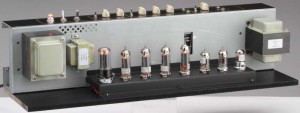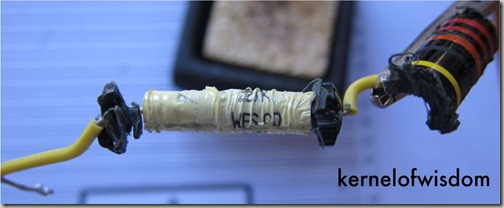
The Cap’s New Clothes
Today, let’s take a look at some really fancy boutique tone capacitors. You can hear these in the yesterday’s tone cap shootout.
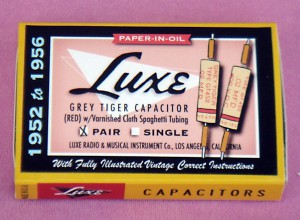
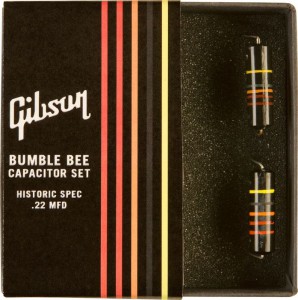
Have you ever wondered what special manufacturing and fabrication techniques they use to make these ultra-boutique capacitors?
Well, Steve over at Kernel of Wisdom has taken a knife to the little guys. And what have we here? Inside a Gibson Repro Bumblebee is really a Wesco polypropylene film cap, all wrapped up in black and stripes And inside a Luxe Grey Tiger, we find a General Instruments PIO cap.
Consider that a typical polypropylene film cap sells for maybe fifty cents. Gibson is selling this for about $50, so let’s see— that’s only a about a 10,000% markup 🙂

This is not to say that these caps don’t sound good. However, what is clear to me (as if it wasn’t clear already) is that there is very little reason to spend this kind of money on a capacitor, unless you’ve got money to burn and it gives you warm fuzzies inside 🙂
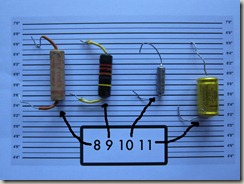
Yet Another Tone Cap Shootout

Well, Steve is back with another meticulously prepared and more comprehensive comparison.
In the ring this time are a Russian T-1 Teflon, Russian K4Y-9 PIO, Cornell-Dubilier PIO, Goodall PIO, Luxe Repro Grey Tiger, Gibson Repro Bumblebee, Sprague Vitamin Q, Jensen PIO, Sprague Orange Drop as well as a generic brown polyester film and ceramic disc caps.
He also has a blind comparison page (don’t peek at the answer key til after you listen).
Great work Steve!
Update: Alas, the KernelOfWisdom website seems to be gone, but you can still see the discussion at the mylspaul forum.
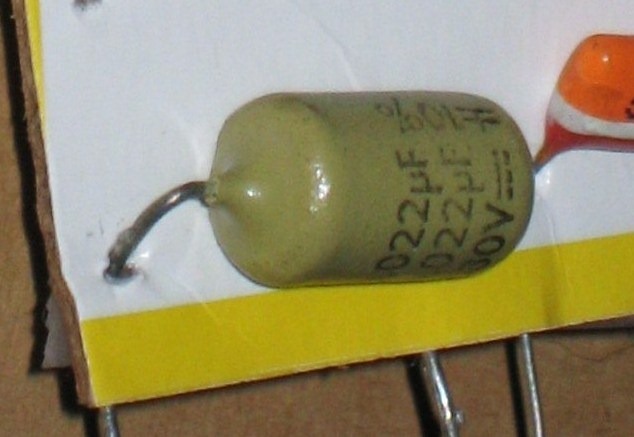
Mystery Caps Identified
In my tone cap material types comparison, there were a couple vintage caps which I couldn’t identify. I referred to them anonymously as the Yellow Cylinder and the Fat Gray Cylinder.
Today, a kind gentleman by the name of Bill Zumwalt was able to give me the clues I needed to track these old caps down and unmask their true identities. The search keywords I needed were CDE and Mustard! More
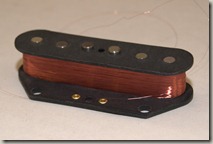
Winding and Potting Pickups

I came across this great web page on making your own pickups, using parts from Stewart-MacDonald.
He’s got a nice pictorial, as well as a video showing the process, beginning to end.
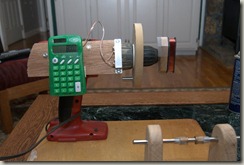
He made another really nice winder with a vintage sewing machine. Sweet!
I’ve seen many web pages before about making pickups, but I just like this guy’s style, creativity and presentation. Well done!
Inspiring project. I gotta try this some day!
Update: Brainrender’s site seems to have gone, but the videos are still available on youtube.

Oh, For the Love of an AC15
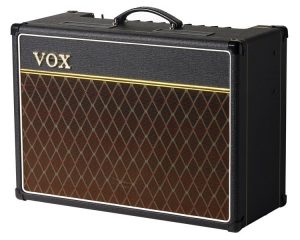
My usual session amp, a late-eighties solid-state Fender Stage 185, is increasingly unsatisfying to play- seems I can never find the right level of brightness in a band setting. Cranking up the presence, or tweaking the treble tends to make it harsh before it becomes pleasant. The clean channel is pretty nice, but the drive/boost channel tends to feel a bit fizzy.

I also really like the ability to kick in extra gain with the new hot/cool foot switch, and the the OP mode switch to drop to 7.5W for nighttime playing.
The only things missing from the hand-wired series are the tremolo and reverb. One tune in yesterday’s session, Glen Phillips’ excellent laid back version of I Want A New Drug, calls for a bit of tremolo- but every time I tried kicking in the AC15C1’s trem, I just found it distracting and reached back to flick down the knob- perhaps I was just overdoing it, but I think I can probably live without it :) And while the AC15C1’s reverb is very warm, smooth and pleasant- I rarely use reverb. And I must say, if you turn the verb knob up over about 10%, it just sounds huuuuge, like you’re playing inside a water tower.
Warning- explicit photos follow:
Full disclosure- I work for Korg R&D, which owns Vox. So perhaps I’m a little biased towards Vox, over other alternatives (employee discount, woo-hoo!)
UPDATE 3/22/2011: I did eventually buy that AC15HW1, and it is a thing of beauty. I borrowed Chuck’s AC15C1 again and made a video comparing the two.

